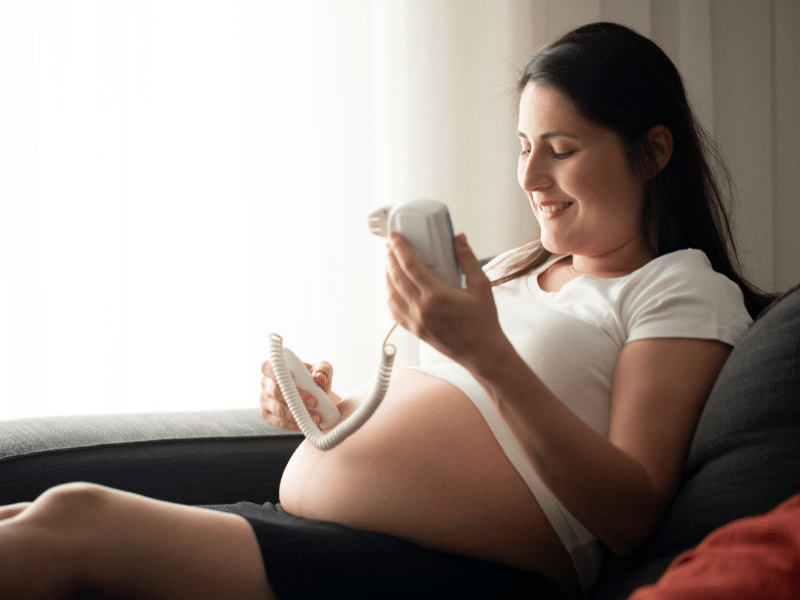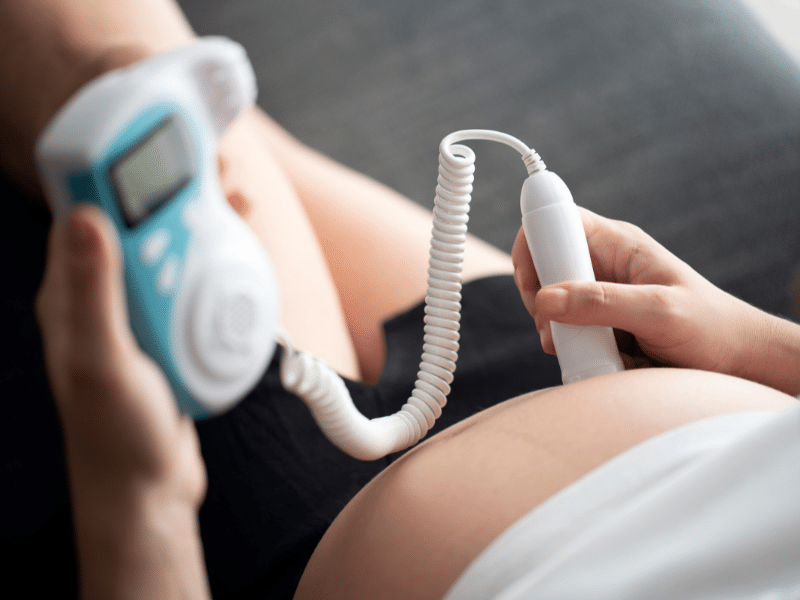Ah, you are finally pregnant and you start to wonder about what your little one is doing in there. Especially in those early stages of pregnancy, where you have that positive pregnancy test, but you aren’t starting to show. You may be thinking that it would be so nice if you could just hear your baby’s heartbeat… so should I get an at-home doppler? They look pretty easy to use when you see them at your doctor’s or midwife’s office. What’s the harm? Let’s take a look and decide if it’s worth the investment.

Fetal dopplers look easy to use, but it can actually be quite tricky to find the baby’s heartbeat if you aren’t trained in using them. Babies have a lot of room to move around in your uterus and so actually finding a heart rate can be difficult. As fetal dopplers use ultrasonic technology, there is evidence that if you leave the doppler in one spot for too long you can actually give yourself tissue damage. Medical staff are trained how to use the dopplers and what to look for so this doesn’t happen.
SOGC (Society of Obstetrics and Gynecology of Canada) and the FDA in the United States both put out a statement in 2014 stating that they don’t recommend at home fetal dopplers stating that they find that they present a potential harm to the fetus as the number of sessions and the length of these sessions are uncontrolled. Fetal dopplers are also an unregulated industry, which means that any company can put out a doppler, but that does not mean that it works well. The dopplers that are used by doctors and midwives are medical grade equipment which means that they are regulated and very expensive.
So what can you do? If you are early in your pregnancy, I would suggest trying to connect with the positive signs of pregnancy. Knowing that the fatigue and nausea you feel is your body starting to nourish this new life inside of you. Most people can start to feel some fetal movement around 16-20 weeks and then you have some physical signs of the new baby moving inside of you. In your third trimester I would recommend doing fetal kick counts, where you pick a time that you know the baby is active, and lay on your left side with your hand over your belly and count 6 fetal movements in 2 hours. Know that babies have sleep cycles in-utero and so it can be common for you to not feel anything for 50 minutes while the baby is sleeping.
If you have any questions or concerns or have a bad feeling about your baby, always trust your instincts and seek medical attention. As a labor and delivery nurse I would always prefer to have a patient call or come to the maternity floor with a concern about fetal movement, than sitting at home worrying about their baby! If you do come to a maternity floor the nurse will do a non-stress test where they put a fetal heart rate monitor on you for around 20-30 minutes to ensure the baby is doing well. In some cases, your health care provider may also order an ultrasound to check for fetal well-being.

I hope this helps you feel secure in knowing that your healthcare provider is always looking out for you and your baby’s best interest and by connecting with positive signs of pregnancy and focusing on fetal movement, you are already being the best mom to your baby!
Looking for a prenatal class? Check out my private or group prenatal class options!




